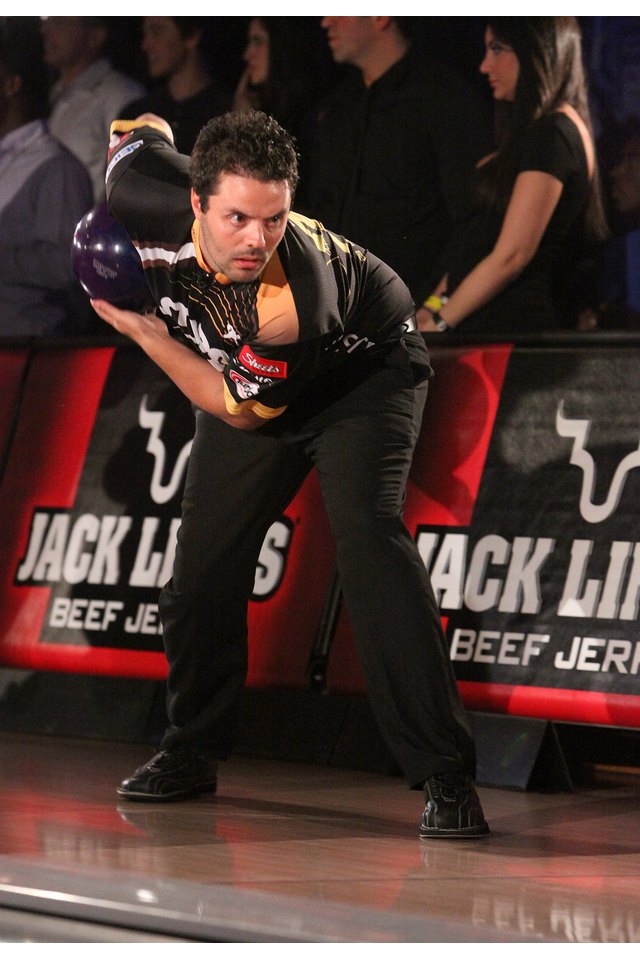What Are the Benefits of a Reactive Bowling Ball?

Since first becoming popular in the 1990s, reactive resin bowling balls have been a leading choice for professional and amateur bowlers looking to get extra power on their strike ball. The increased backend hook that reactive resin balls create can turn poor throws into strikes and help boost any player’s average. Understanding what a reactive resin ball is and how it creates more hook will help you to use this ball effectively in your next league match or tournament.
Definition
A reactive bowling ball has a urethane coverstock with particles of resin mixed in. Previously, bowling ball manufacturers had only made balls with a solid compound of urethane. The sticky resin gave the ball a tackiness that increased the grip the ball has on the lane.
Hook
The primary effect of a reactive resin bowling ball is that it has a much greater potential to hook than a ball with only urethane in its coverstock. This is because the additional grip of the ball to the lanes allows it to hook more dramatically. This is particularly true in the backend of the lanes, which is the 15 feet closest to the pins.
Margin of Error
The additional grip to the lanes that a reactive resin bowling ball has creates a tighter rotational spin as the ball hits the pins. This increases the centrifugal force that the ball has and creates additional power when it strikes the pins. This means that a bowler’s margin of error is increased when he throws a strike ball. Instead of needing to hit a precise point within the pocket to get a strike, a bowler can miss and still be rewarded with a strike thanks to the additional pin action caused when the reactive ball makes contact.
Considerations
If you are used to bowling with a urethane bowling ball, you might struggle when you first try throwing with a reactive resin ball. A throw and release that creates a sufficient amount of hook with a urethane ball might create too much hook on the backend when throwing a reactive resin ball. This can lead to “pocket splits” because of the ball going deeper into the pocket than necessary. In the mid-1990s, professional bowler Pete Weber was forced to change his delivery to ramp down the revolution rate of his balls to accommodate reactive resin equipment. You can alter the aggressiveness of the curve during the drilling process at your pro shop.
References
- The Game Changer: A Simple System for Improving Your Bowling Scores; Mark Baker
- BowlersParadise.com: Bowling Ball Terms
- Essential Bowling; Michael Benson
Resources
Writer Bio
Richard Manfredi has more than a decade of professional writing experience, both in the media and at a corporate level. Since 2003, he has worked in the public relations industry, creating and executing campaigns for technology and entertainment companies. Manfredi is also a journalist who has worked for the "Orange County Register," as well as several online publications.
